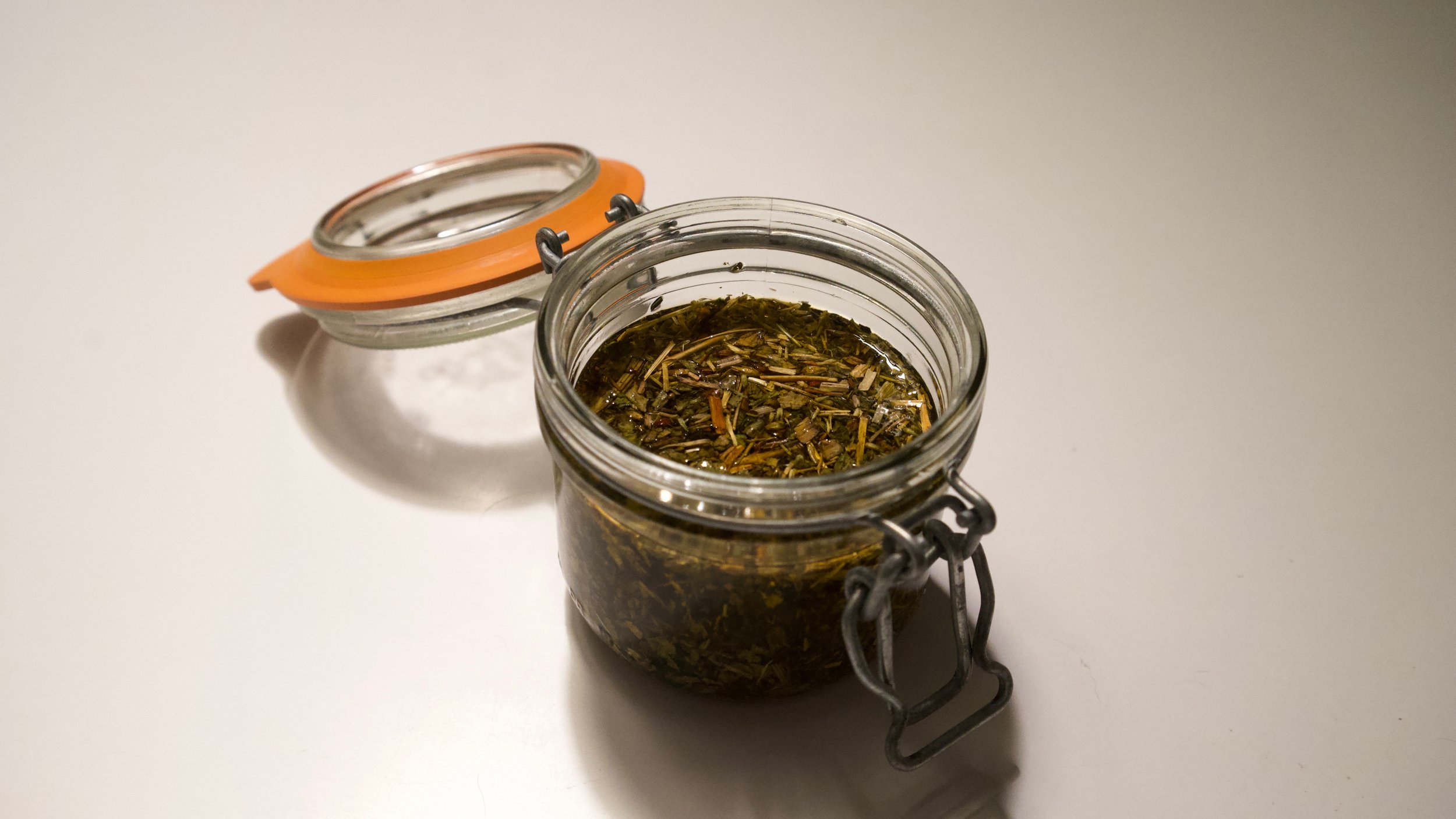For all the joy that beekeeping brings, it comes with an abundance of stings, scrapes, bumps, and sunburns. This simple salve keeps us feeling good in the summertime, and it’s also really nice on sad, dry winter skin!
An herbal salve is a thick ointment that draws upon the medicinal power of plants to heal and repair the surface of the body. Depending on the herbs used, salves can be helpful for tending to dry, chapped skin, cuts, bruises, sore muscles, insect bites, bee stings (a big deal around these parts!), blisters, and minor burns. They are inexpensive, simple to make, and easy to source, making them a lovely addition to any first-aid kit!
Step One: Choose Your Herbs
The base of any salve worth its salt is an herbal infusion. Herbal infusions are created by using a solvent (in this case, oil) to extract the medicinal constituents from herbs. At this point, we choose what kind of salve we want to make, and then identify the corresponding herbs.
I want to make a salve that is going to cover all of my bee season bases: antibacterial for scrapes earned working on the farm, soothing for dry, sunburned skin and anti-inflammatory itch relief for bee stings and bug bites. Many herbs are wonderful multitaskers, which means that I only need to choose a few strategic herbs to provide relief for all of the above.
I have listed the herbs I wound up with below, but this is only the tip of the herbal iceberg! Mountain Rose Herbs has a great round-up of the most commonly used herbs in medicine, which you can check out here.
Plantain: Anti-inflammatory and cooling. This powerful herb is usually identified as a weed; it grows rampantly across North America. Fun fact! If you receive an insect sting, try to spot some nearby plantain. You can chew it up and rub it on the sting, and experience instantaneous relief.
Chickweed: Demulcent (relieves irritation) and cooling. Another common “weed”, chickweed is another powerful healer and is wonderful at soothing red, irritated skin.
Calendula: Analgesic (relieves pain), anti-bacterial, anti-inflammatory. Calendula is a favorite of many herbalists because it has so many healing qualities, but is also a beautiful addition to gardens.
You may also choose to add essential oils, which will make your salve smell extra good and may lend some extra healing power. Essential oils are potent, though, so use them sparingly!
Lavender Essential Oil: Analgesic, anti-bacterial, anti-inflammatory, vulnerary (wound healing). There’s a reason that lavender is one of the most popular herbal remedies. It covers a wide range of healing bases and smells heavenly.
Note: The herbs listed above may have more herbal actions than listed here; I’ve just highlighted the specific ways that they contribute to what I’m shooting for in this recipe.

Step Two: Infuse your Oil
Now that we’ve got our herbs ready, we can prepare our infusion. There are three main methods of infusing oil:
Best: Cold Infusions = oil + herb + time (4 - 6 weeks)
Good: Solar Infusions = oil + herb + sun + time (2 - 4 weeks)
In a pinch: Hot Infusions = oil + herb + heat ( 2 - 3 hours)
The basic preparation involves filling half of a clean glass jar with your dried herbs and then filling the jar to the top with oil. The steeping time varies on the method you use (listed above). If you’re in a time crunch, you can also make a quick heat infusion in a double boiler or slow cooker. For in-depth instructions on infusing your oil, check out this tutorial from Mountain Rose Herbs.
Step Three: Prepare your Salve
Now it’s time to put it all together! This part is simple, fast and we have been waiting a while to do it, which makes it a very gratifying experience.
1 T Beeswax, chipped
5 T Infused Oil
15 drops Lavender Essential Oil
1) Put your oil and beeswax into a double boiler, crock pot or electric cooker. Slowly heat on low until the mixture is melted.
2) Remove from heat and add a few drops of essential oil and Vitamin E oil, if using; stir to blend.
3) Carefully pour into your container(s) and let cool.
4) Label and store! This will keep for up to a year.
To use, just scoop a small amount into your hand and apply directly to the afflicted area. Use as often as needed.

